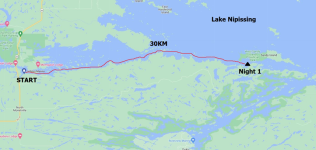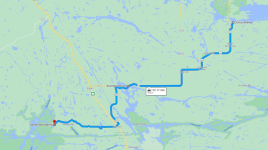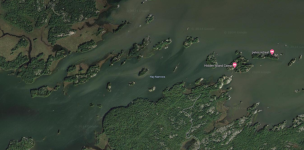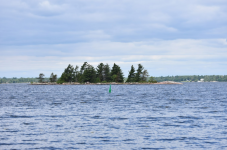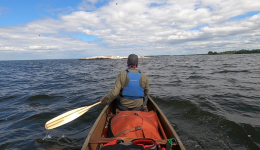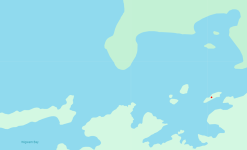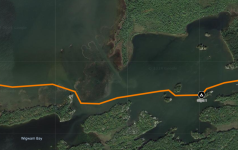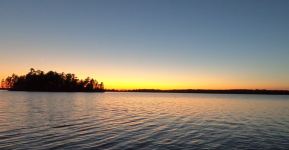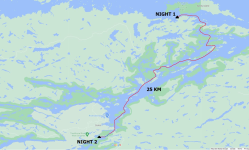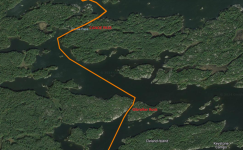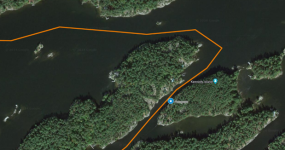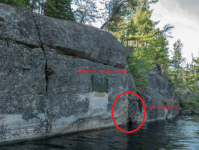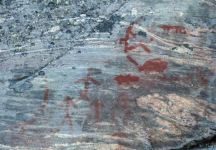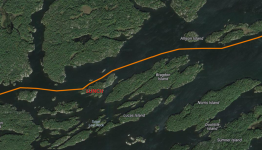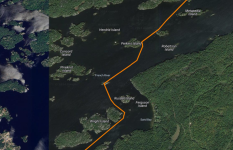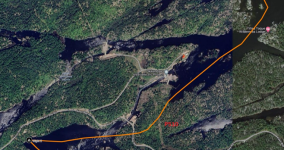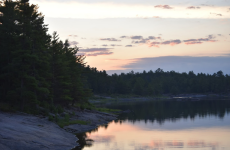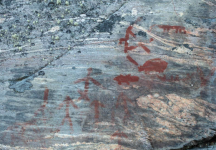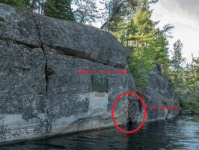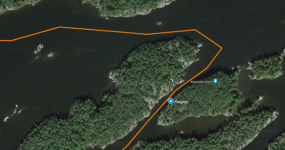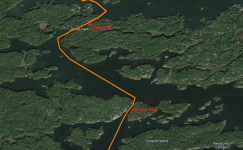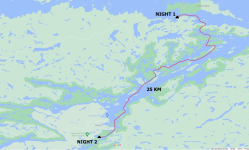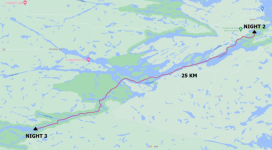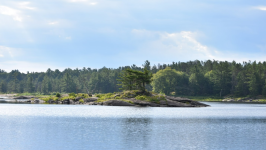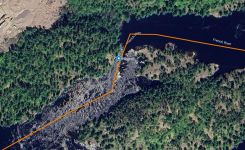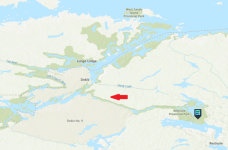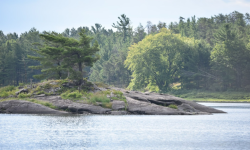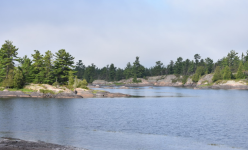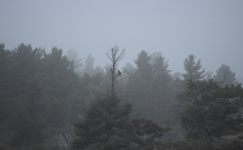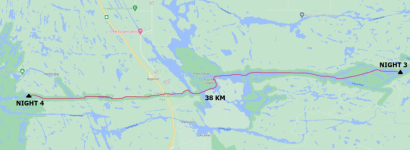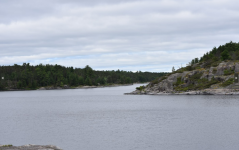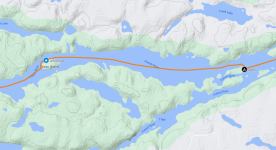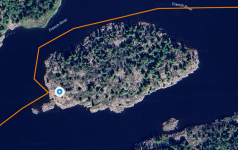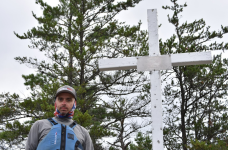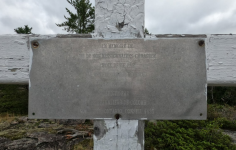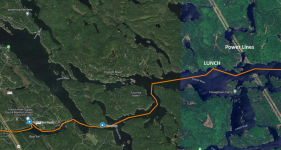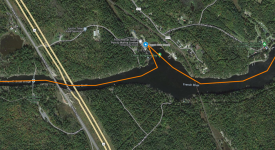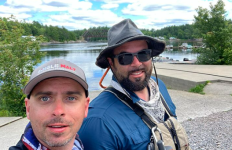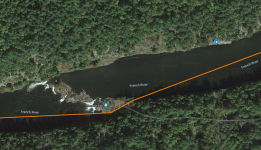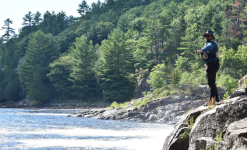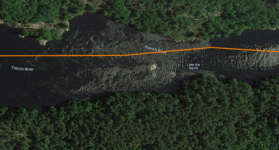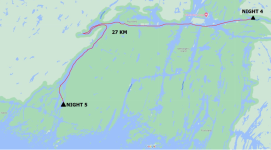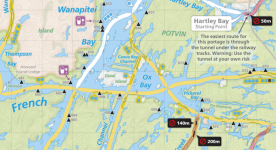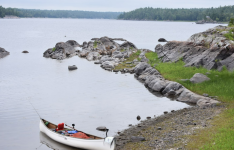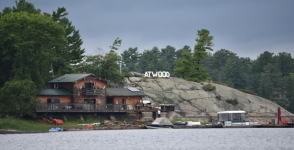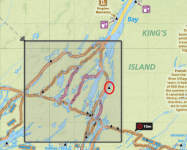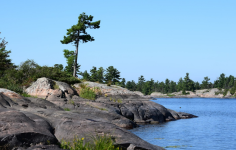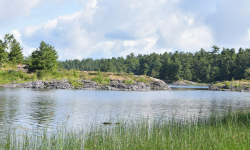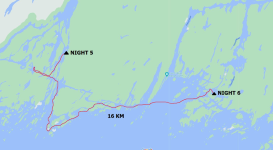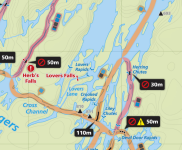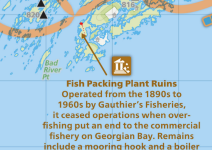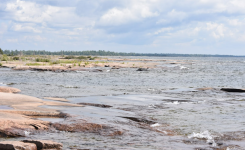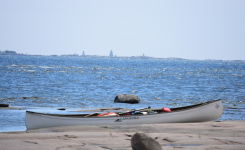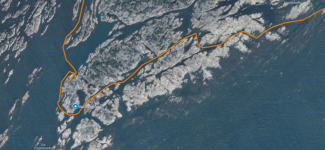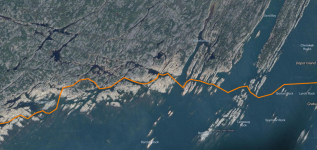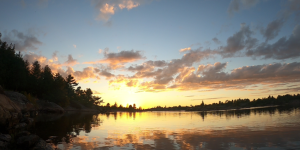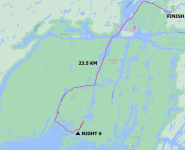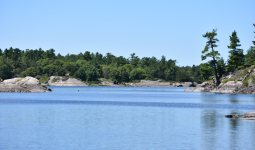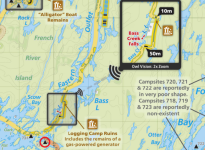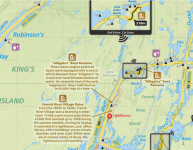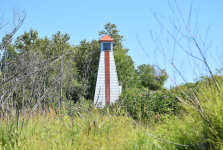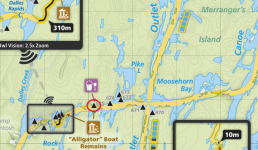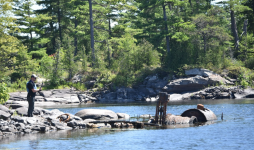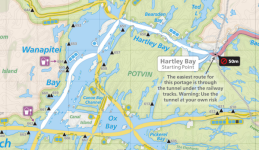- Joined
- Mar 16, 2022
- Messages
- 39
- Reaction score
- 138
ACCESS POINT START : Lichty’s Marina (Sucker Creek Landing)
ACCESS POINT FINISH: Hartley Bay Marina
# OF DAYS / NIGHTS: 7 D / 6 N | DIFFICULTY LEVEL: Advanced
TOTAL KM: 184.5 KM | # OF PORTAGES (DISTANCE): 6 (2.2 KM)
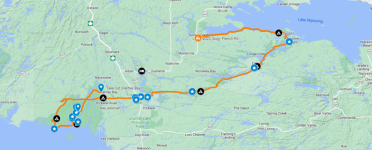
During the winter months we had decided to plan and execute a weeklong trip somewhere other than Algonquin during the summer of 2022. The last time we had switched things up was in August of 2019 when we spent a week in Wabakimi. For a few years we had been tossing around the idea of completing the French River from Lake Nipissing right through to Georgian Bay. We had a very loose plan in place for the trip when we attended the outdoor show in the spring of 2022. After listening to Kevin Callan talk about the area, we firmed everything up in our minds and got to work planning.
The logistics for this trip were very different from our usual weeklong trips. We are familiar with Algonquin Park and how to access and navigate its many canoe routes. We knew little about the French River, so plenty of research was required. We started off by ordering various French River maps. Unlostify (now Maps by Jeff) has a decent West French River map, but this only covers the bottom end of our trip and would not suffice on its own. The Ontario Parks French River map is much more useful for the type of trip we were planning, as it covers the entire French River including the top end North of Restoule PP.
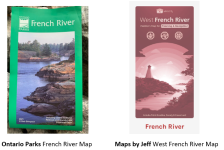
Once the maps were in hand the next step, like all trip planning, was to grab a bottle of Lagavulin 16 and figure out where we wanted to go. The first few things we noticed about the area were the absence of portages of any real distance, the amount of paddling we would need to do on large water / into the wind, and the lack of trees towards Georgian Bay. The plan was for Rich and Ryan to paddle together, with Evan paddling solo if a partner could not be found. All three of us were going to be bringing our Hennessy Hammocks. The open water paddling was worrisome and could be a real showstopper if the weather was uncooperative, especially for Evan paddling solo. We would need to plan some buffer time into the trip to accommodate. The requirement to have trees for hammocks could also lengthen our days if we spent additional time searching for a suitable campsite. The sparsity of portaging was the cherry on top! We could pack heavier than normal and bring more beverages! We measured out a trip on Google Maps using 25-30kms per day as a baseline and determined that a Saturday-to-Saturday trip (eight days) would be enough to complete the 184.5 KM trip we had in mind. This was basically one day longer than we would need with ideal conditions, plus we would have the Sunday as some additional buffer in case things went sideways. There were going to be some long days and early mornings, but we were all quite excited. We booked the time off work and Rich started making the dehydrated meals we would require.
Another big difference we found when planning our trip was obtaining the backcountry permits. Normally we would obtain our permits 5 months in advance through the Ontario Parks online reservation system. The French River is different in that you cannot book more than 2 weeks in advance, and it is done under the “Back Country Registration” tab. You also need to book your campsites in 1 of 9 camping zones! There are several entry points listed, but everything really hinges around these zones (Note: The campsite numbers on the French River map correspond to what zone they are in. We did not really think of this until we had already booked. It would be helpful when planning as there are obviously no markers on where the zones start and end on the map, we used the website to guess!). Since our trip was going to start on Lake Nipissing, we also had at least 1 night where we would be out of the park. When ordering permits in the back country registration section it allows for this, you just need to select “Out of Park” in the “Available Zones” drop down.
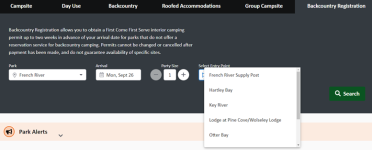
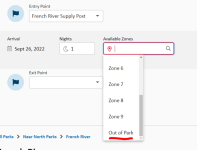
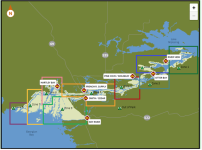
The hardest part of the trip planning was working out how to pull off a nearly 190KM one way trip in an area of the province we had no experience with. We would need multiple vehicles to get boats, gear, and bodies to where they need to be, requiring a lot of shuttling. Since we live over 5 hours away from the park, we also wanted to find a place to sleep the night before disembarking. Finding a suitable place to stay proved to be more difficult than expected, as we were planning to enter the park on the Saturday of the long weekend in August! There are few major cities or towns close by, and most places to stay are “resorts” which require multiple nights to be reserved on the long weekends. We also needed to select an access point with parking for one vehicle, as well as a takeout point with parking for the second vehicle. After about two weeks of web browsing and phone calls we were able to set up a nearly ideal plan.
We would drive up after work on Friday and stay one night at a small motel in Alban, ON called the Riverdale Resort. Alban is essentially located halfway between the two access points we were going to use. We chose to start our trip from Lichty’s Marina, which is located off Shuswap Road on the West Bay of Lake Nipissing. We called the owner, Phillip, who was quite easy to deal with. Parking is available and only costs $5/day on an honour system (fill out a form, add money to the provided envelope and leave it in the drop box) and most importantly we could drop and pick up vehicles at any time of the day or night. We chose Hartley Bay Marina as our takeout location, which did have restrictions on operating hours (0700-2100 EST on Fridays and Weekends) and would cost $14/day for parking. We didn’t search too hard for an alternative as this marina is easy to get to and is located exactly where we wanted to end our trip.
Now that everything was planned, all we needed to do was sort everything out with work and families and wait for our departure date. Unfortunately, Ryan had a family emergency the morning we were set to depart which forced him to miss the trip. It was a tough decision for Ryan to make, but ultimately once the trip starts it is hard to pull the pin and come home from such a far distance away. We did some last-minute gear, booze, and food reduction to account for one less human, and hit the road around 1600 EST. We only had one canoe now, but still needed to drive up in separate cars to pull off the multiple shuttles. We arrived shortly after 2100 EST in Alban and checked into the hotel.
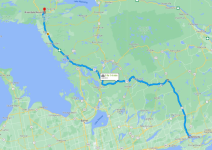
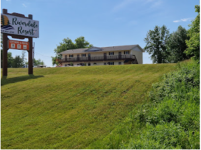
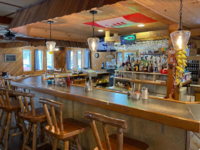
The room was small, but we were only going to be sleeping there for 4-5 hours anyways. We headed down to the bar at the hotel to meet and greet the locals and then started our first leg of shuttling. We wanted to leave Rich’s car at the top end, and the truck at the bottom end so it was ready to load once we finished. The first thing we needed to do was get the canoe to Lichty’s Marina, which we did on Friday night.
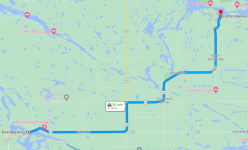
It took us around 50 minutes to drive to the dock, stash the canoe beside the boathouse, and drive back. We were back to the hotel and ponied up to the bar sucking back Exports before 2300 EST. A few hours later, and about half of George Strait’s greatest hits, we figured we should call it a night. It was going to be an early morning, a long day, and some wicked hangovers!
Daily Trip log to follow...
ACCESS POINT FINISH: Hartley Bay Marina
# OF DAYS / NIGHTS: 7 D / 6 N | DIFFICULTY LEVEL: Advanced
TOTAL KM: 184.5 KM | # OF PORTAGES (DISTANCE): 6 (2.2 KM)

During the winter months we had decided to plan and execute a weeklong trip somewhere other than Algonquin during the summer of 2022. The last time we had switched things up was in August of 2019 when we spent a week in Wabakimi. For a few years we had been tossing around the idea of completing the French River from Lake Nipissing right through to Georgian Bay. We had a very loose plan in place for the trip when we attended the outdoor show in the spring of 2022. After listening to Kevin Callan talk about the area, we firmed everything up in our minds and got to work planning.
The logistics for this trip were very different from our usual weeklong trips. We are familiar with Algonquin Park and how to access and navigate its many canoe routes. We knew little about the French River, so plenty of research was required. We started off by ordering various French River maps. Unlostify (now Maps by Jeff) has a decent West French River map, but this only covers the bottom end of our trip and would not suffice on its own. The Ontario Parks French River map is much more useful for the type of trip we were planning, as it covers the entire French River including the top end North of Restoule PP.

Once the maps were in hand the next step, like all trip planning, was to grab a bottle of Lagavulin 16 and figure out where we wanted to go. The first few things we noticed about the area were the absence of portages of any real distance, the amount of paddling we would need to do on large water / into the wind, and the lack of trees towards Georgian Bay. The plan was for Rich and Ryan to paddle together, with Evan paddling solo if a partner could not be found. All three of us were going to be bringing our Hennessy Hammocks. The open water paddling was worrisome and could be a real showstopper if the weather was uncooperative, especially for Evan paddling solo. We would need to plan some buffer time into the trip to accommodate. The requirement to have trees for hammocks could also lengthen our days if we spent additional time searching for a suitable campsite. The sparsity of portaging was the cherry on top! We could pack heavier than normal and bring more beverages! We measured out a trip on Google Maps using 25-30kms per day as a baseline and determined that a Saturday-to-Saturday trip (eight days) would be enough to complete the 184.5 KM trip we had in mind. This was basically one day longer than we would need with ideal conditions, plus we would have the Sunday as some additional buffer in case things went sideways. There were going to be some long days and early mornings, but we were all quite excited. We booked the time off work and Rich started making the dehydrated meals we would require.
Another big difference we found when planning our trip was obtaining the backcountry permits. Normally we would obtain our permits 5 months in advance through the Ontario Parks online reservation system. The French River is different in that you cannot book more than 2 weeks in advance, and it is done under the “Back Country Registration” tab. You also need to book your campsites in 1 of 9 camping zones! There are several entry points listed, but everything really hinges around these zones (Note: The campsite numbers on the French River map correspond to what zone they are in. We did not really think of this until we had already booked. It would be helpful when planning as there are obviously no markers on where the zones start and end on the map, we used the website to guess!). Since our trip was going to start on Lake Nipissing, we also had at least 1 night where we would be out of the park. When ordering permits in the back country registration section it allows for this, you just need to select “Out of Park” in the “Available Zones” drop down.



We set a reminder in our calendars for mid-July and would come back to permit purchasing then. It was stressful moving forward with trip planning not knowing if we could get permits to accommodate our trip plan. Luckily, we had no issues booking our permits in July and when on the trip we found that the campsites were predominantly vacant, especially East of Recollet Falls.The hardest part of the trip planning was working out how to pull off a nearly 190KM one way trip in an area of the province we had no experience with. We would need multiple vehicles to get boats, gear, and bodies to where they need to be, requiring a lot of shuttling. Since we live over 5 hours away from the park, we also wanted to find a place to sleep the night before disembarking. Finding a suitable place to stay proved to be more difficult than expected, as we were planning to enter the park on the Saturday of the long weekend in August! There are few major cities or towns close by, and most places to stay are “resorts” which require multiple nights to be reserved on the long weekends. We also needed to select an access point with parking for one vehicle, as well as a takeout point with parking for the second vehicle. After about two weeks of web browsing and phone calls we were able to set up a nearly ideal plan.
We would drive up after work on Friday and stay one night at a small motel in Alban, ON called the Riverdale Resort. Alban is essentially located halfway between the two access points we were going to use. We chose to start our trip from Lichty’s Marina, which is located off Shuswap Road on the West Bay of Lake Nipissing. We called the owner, Phillip, who was quite easy to deal with. Parking is available and only costs $5/day on an honour system (fill out a form, add money to the provided envelope and leave it in the drop box) and most importantly we could drop and pick up vehicles at any time of the day or night. We chose Hartley Bay Marina as our takeout location, which did have restrictions on operating hours (0700-2100 EST on Fridays and Weekends) and would cost $14/day for parking. We didn’t search too hard for an alternative as this marina is easy to get to and is located exactly where we wanted to end our trip.
Now that everything was planned, all we needed to do was sort everything out with work and families and wait for our departure date. Unfortunately, Ryan had a family emergency the morning we were set to depart which forced him to miss the trip. It was a tough decision for Ryan to make, but ultimately once the trip starts it is hard to pull the pin and come home from such a far distance away. We did some last-minute gear, booze, and food reduction to account for one less human, and hit the road around 1600 EST. We only had one canoe now, but still needed to drive up in separate cars to pull off the multiple shuttles. We arrived shortly after 2100 EST in Alban and checked into the hotel.

Belleville to Riverdale Resort (Alban,ON): 446 KM (5 Hours 14 minutes)


The room was small, but we were only going to be sleeping there for 4-5 hours anyways. We headed down to the bar at the hotel to meet and greet the locals and then started our first leg of shuttling. We wanted to leave Rich’s car at the top end, and the truck at the bottom end so it was ready to load once we finished. The first thing we needed to do was get the canoe to Lichty’s Marina, which we did on Friday night.

It took us around 50 minutes to drive to the dock, stash the canoe beside the boathouse, and drive back. We were back to the hotel and ponied up to the bar sucking back Exports before 2300 EST. A few hours later, and about half of George Strait’s greatest hits, we figured we should call it a night. It was going to be an early morning, a long day, and some wicked hangovers!
Daily Trip log to follow...

